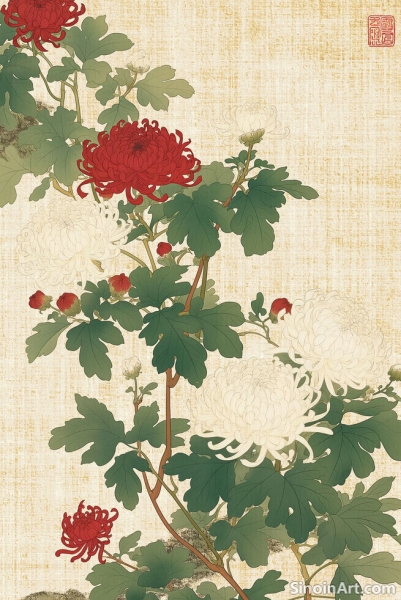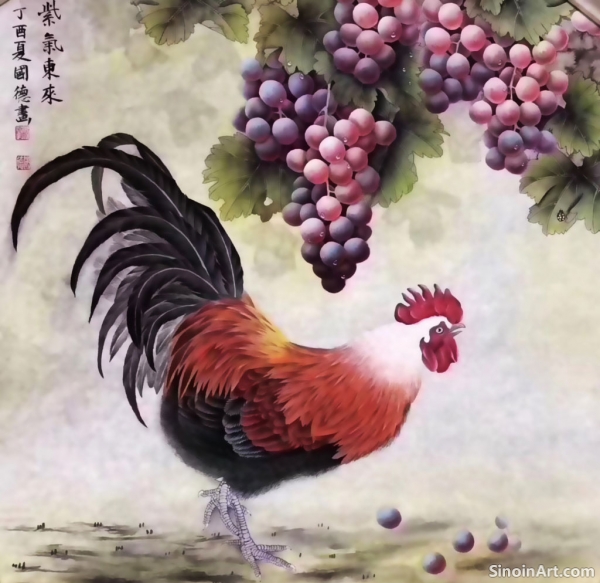The Exquisite World of Gongbi: A Detailed Introduction
|
Gongbi painting, a meticulous and highly refined style of Chinese painting, stands in stark contrast to the more free-flowing and expressive xieyi (freehand) style. The name itself, Gongbi, literally translates to "meticulous" or "detailed brush," accurately reflecting the painstaking process involved. This ancient art form, with a history stretching back over two thousand years, demands not only artistic talent but also a mastery of brushstrokes, ink, and color application. It is a testament to the patience and dedication of the artist.  The hallmark of Gongbi lies in its precise depiction of forms and textures. Unlike xieyi, which embraces spontaneity and suggestion, Gongbi painting meticulously renders every detail, from the delicate veins of a flower petal to the individual feathers of a bird. Outlines are carefully drawn with fine brushstrokes, and then layered with washes of vibrant color. This technique often creates a sense of realism and luminosity, making the subjects appear almost three-dimensional. The process requires exceptional control and a deep understanding of both the subject matter and the materials.  Historically, Gongbi was the dominant style employed in the imperial courts and by the wealthy elite in China. Court painters would create elaborate murals, portraits, and illustrations, often laden with symbolic meaning and intended for display in palaces and temples. These paintings were not merely artistic endeavors; they served as a form of storytelling, conveying narratives of power, prosperity, and cultural heritage. The attention to detail and the use of luxurious pigments further enhanced their opulence.  Subjects commonly depicted in Gongbi painting include birds, flowers, insects, landscapes, and human figures, often portrayed with serene grace and refinement. The artist's intention is not just to replicate reality but to convey a sense of harmony and beauty, capturing the essence of the subject rather than just its outward appearance. This requires a careful observation of nature and a deep appreciation for the intricate details of the world around them. Today, Gongbi painting continues to be practiced by both established masters and emerging artists. It remains a powerful testament to the rich artistic heritage of China and an enduring source of inspiration for artists worldwide. The techniques are constantly being explored and adapted, blending traditional methods with contemporary sensibilities, ensuring that this captivating art form will continue to evolve and flourish. |
Tag : Gongbi painting, Chinese painting, meticulous painting, detailed brush painting, traditional Chinese art
Related information
- The Symbolism of Gongbi: Decoding the Language of the Brush
- Gongbi Painting in the Modern Era: Reinterpretations and Adaptations
- Gongbi and the Depiction of Water: Capturing the Flow and Spirit
- The Spiritual Dimensions of Gongbi Painting
- Gongbi and the Depiction of Everyday Life
This article explores the symbolic elements found in Gongbi paintings, focusing on the meanings behind flowers, animals, colors, and compositions within the Chinese artistic tradition.
Discusses the reinterpretations and adaptations of Gongbi painting in the modern era, highlighting new themes, techniques, and the blending of tradition with contemporary sensibilities.
This article explores the depiction of water in Gongbi painting, highlighting the techniques used to capture its flow and movement, the use of color to suggest its depth, symbolic significance, and how it enhances the overall sense of harmony and balance within the artwork.
This article delves into the spiritual dimensions of Gongbi painting, highlighting how the meticulous process, symbolic subject matter, and spiritual intentions of the artist create a deep connection with the natural and divine realms.
This article explores the use of Gongbi painting in depicting scenes from everyday life, highlighting its meticulous detail, portrayal of common activities, and how these works serve as visual records of daily existence and a particular time and place.